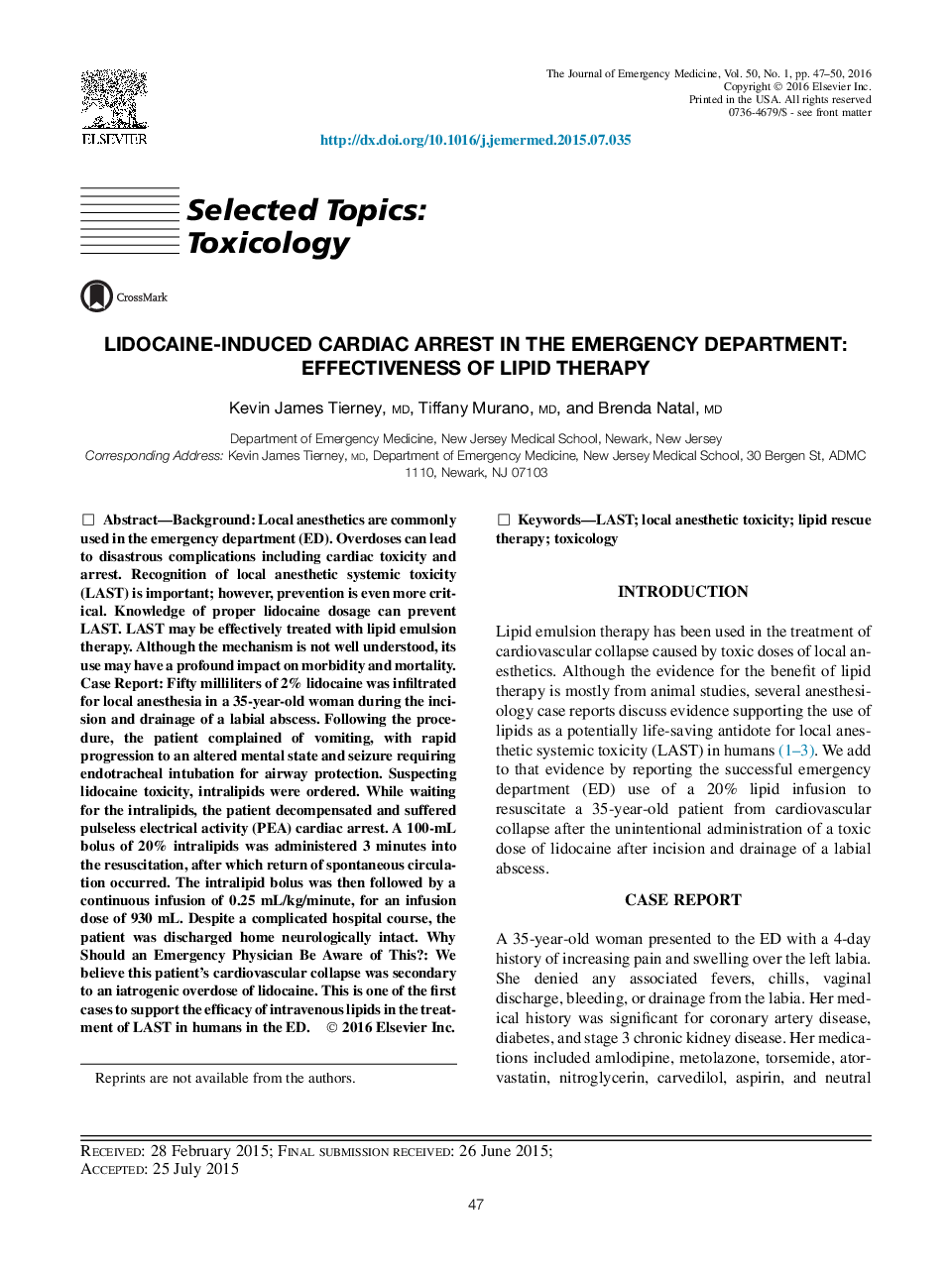| کد مقاله | کد نشریه | سال انتشار | مقاله انگلیسی | نسخه تمام متن |
|---|---|---|---|---|
| 6085016 | 1589117 | 2016 | 4 صفحه PDF | دانلود رایگان |
BackgroundLocal anesthetics are commonly used in the emergency department (ED). Overdoses can lead to disastrous complications including cardiac toxicity and arrest. Recognition of local anesthetic systemic toxicity (LAST) is important; however, prevention is even more critical. Knowledge of proper lidocaine dosage can prevent LAST. LAST may be effectively treated with lipid emulsion therapy. Although the mechanism is not well understood, its use may have a profound impact on morbidity and mortality.Case ReportFifty milliliters of 2% lidocaine was infiltrated for local anesthesia in a 35-year-old woman during the incision and drainage of a labial abscess. Following the procedure, the patient complained of vomiting, with rapid progression to an altered mental state and seizure requiring endotracheal intubation for airway protection. Suspecting lidocaine toxicity, intralipids were ordered. While waiting for the intralipids, the patient decompensated and suffered pulseless electrical activity (PEA) cardiac arrest. A 100-mL bolus of 20% intralipids was administered 3 minutes into the resuscitation, after which return of spontaneous circulation occurred. The intralipid bolus was then followed by a continuous infusion of 0.25 mL/kg/minute, for an infusion dose of 930 mL. Despite a complicated hospital course, the patient was discharged home neurologically intact.Why Should an Emergency Physician Be Aware of This?We believe this patient's cardiovascular collapse was secondary to an iatrogenic overdose of lidocaine. This is one of the first cases to support the efficacy of intravenous lipids in the treatment of LAST in humans in the ED.
Journal: The Journal of Emergency Medicine - Volume 50, Issue 1, January 2016, Pages 47-50
